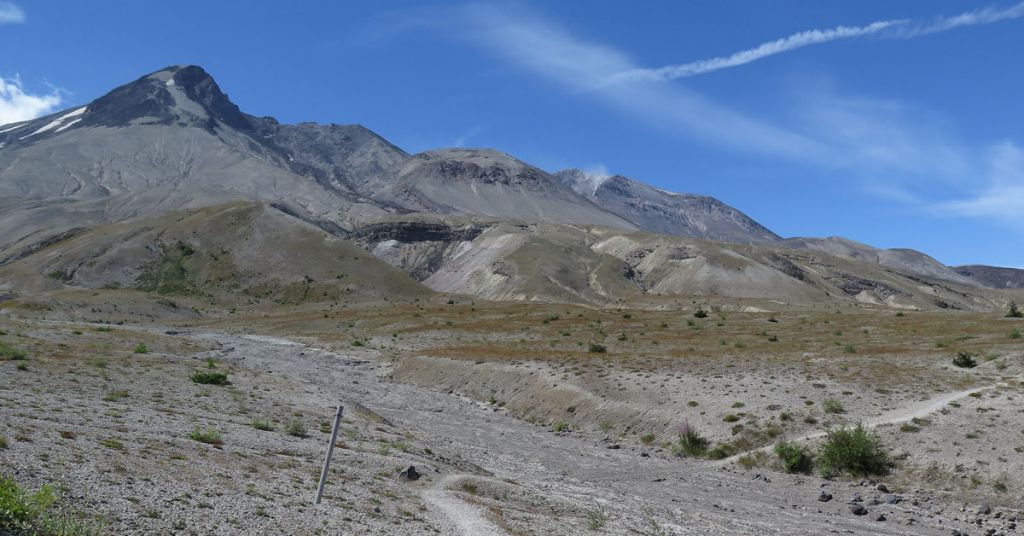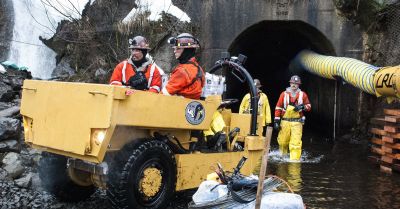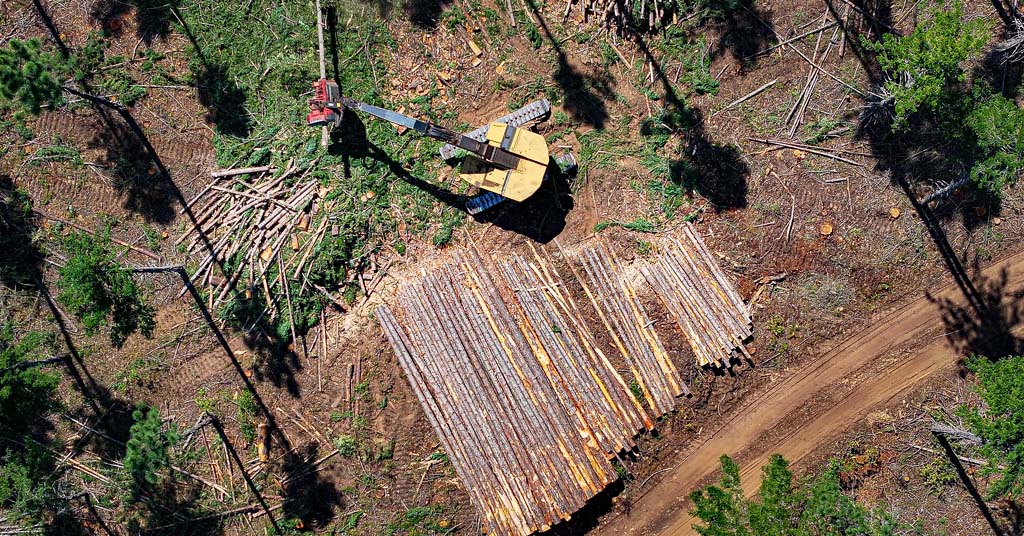A new court filing makes public a lawsuit filed against the U.S. Forest Service for plans to build a road in the national monument

Through hiking? The Pumice Plain beneath Mount St. Helens remains roadless. For now. Photo by Kelly Michals/CC
By Jordan Rane. August 26, 2021. A year ago, Columbia Insight reported on what became one of our most widely followed stories of 2020: the U.S. Forest Service’s proposal to build a road through the blast zone at Mount St. Helens National Volcanic Monument.
The proposed road would be used to access a failing natural dam and outdated outflow system on the volcano’s Spirit Lake.
The desired route through the Pumice Plain—a six-square-mile volcanic wasteland turned living ecological laboratory—would stick a paved artery through one of the most vital, untrammeled research sites on earth, according to the scientific community and allied conservationists.
MORE: New road at Mount St. Helens? Scientists see another disaster
The fight ratcheted up in March with a multi-plaintiff lawsuit filed against the Forest Service.
As with most judicial eruptions around Mount St. Helens, the story then vanished into legal-morass mode.
Cut to a year later. What’s happened since that initial blast?
Milestone of sorts
“You haven’t missed much,” says Susan Jane Brown, a staff attorney with Western Environmental Law Center, which is representing a broad coalition of scientists and conservation groups now challenging the USFS in federal court. The coalition includes the Cascade Forest Conservancy, Washington Native Plant Society and Sierra Club. “There’s been a lot of administrative stuff going on in the background since we filed our lawsuit. Our opening brief is due on August 27. When that’s filed, it’s a public document.”

Exit strategy: Workers made interim repairs to the Spirit Lake Output Tunnel in January 2016. Photo by Jeffrey Henon/USACE
The government is expected to provide a responsive brief in early October, followed by a second plaintiff brief in late October, followed by a second defendant’s brief in November, etc.
You get the picture. While the upshot is hugely consequential, this road war will likely be advancing at leaden, lava-flow speeds for the foreseeable future.
The court is expected to hold oral arguments on the case some time in 2022.
“Our hope is that the Forest Service does a responsible, thorough analysis and takes a proper look at the long-term management plan for Spirit Lake,” says Brown, who agrees that the agency is dealing with a legitimate public safety challenge that must be addressed. “Nobody wants to have a dam break or a tunnel fail at Spirit Lake and have downstream communities inundated. Studies show that risk is 100% real—but that it’s not going to happen tomorrow.”
Lack of analysis charged
The more pressing issue, according to those challenging the road, is preserving the integrity of a national monument and research site unlike any other on the planet—one in which scientists and visitors alike are able to witness noninvasive, ecological regeneration in real time.
Research at the site dates to soon after 1980 Mount St. Helens eruption. Studies have produced new insights into the ways watersheds take shape, the evolution of aquatic species and mammals and the development of new plant communities.
[perfectpullquote align=”full” bordertop=”false” cite=”” link=”” color=”” class=”” size=””]“They just really like to build roads, and they’re pretty set on that here.” — Susan Jane Brown, Western Environmental Law Center[/perfectpullquote]
“Over the past four years, we have offered the Forest Service many alternatives to this project that protect public safety, preserve research plots on the Pumice Plain and mitigate environmental impacts,” says Lucy Brookham, policy manager for the Cascade Forest Conservancy, on the organization’s Protect the Plain alert page. “Instead, the agency is pushing this project forward without adequate environmental analysis or consideration of the permanent impacts the construction of a road will have on this incredible landscape.”
Like lava—hot but slow
Whichever way the lawsuit falls in district court, plaintiff legal counsel expects an appeal to the U.S. Court of Appeals for the Ninth Circuit, while holding out hope that common ground can eventually be found.
“We do want to be good partners with the Forest Service,” says Brown. “The problem is we’re flying blind here because the agency has not done its due diligence with a proper analysis. They just really like to build roads, and they’re pretty set on that here. We’re ever-hopeful they’ll change their mind, but it may take a federal judge to convince them otherwise.”
Subscribe to Columbia Insight. It’s free!
All hopes aside, what’s the most likely next act in the Pumice Plain legal drama? Any sneak preview? Brown laughs and takes the Fifth.
“We always seem to be writing the sequel to the sequel at Mount St. Helens,” she says. “It really is just such an incredibly special place. And while there are lots of opinions about how it should be managed, a lot of folks are very committed to retaining its current undeveloped condition.
“As long as those closely held values are threatened, there’s going to be more ahead.”
Columbia Insight contributing editor Jordan Rane is an award-winning journalist whose work has appeared in CNN.com, Outside, Men’s Journal and the Los Angeles Times.










